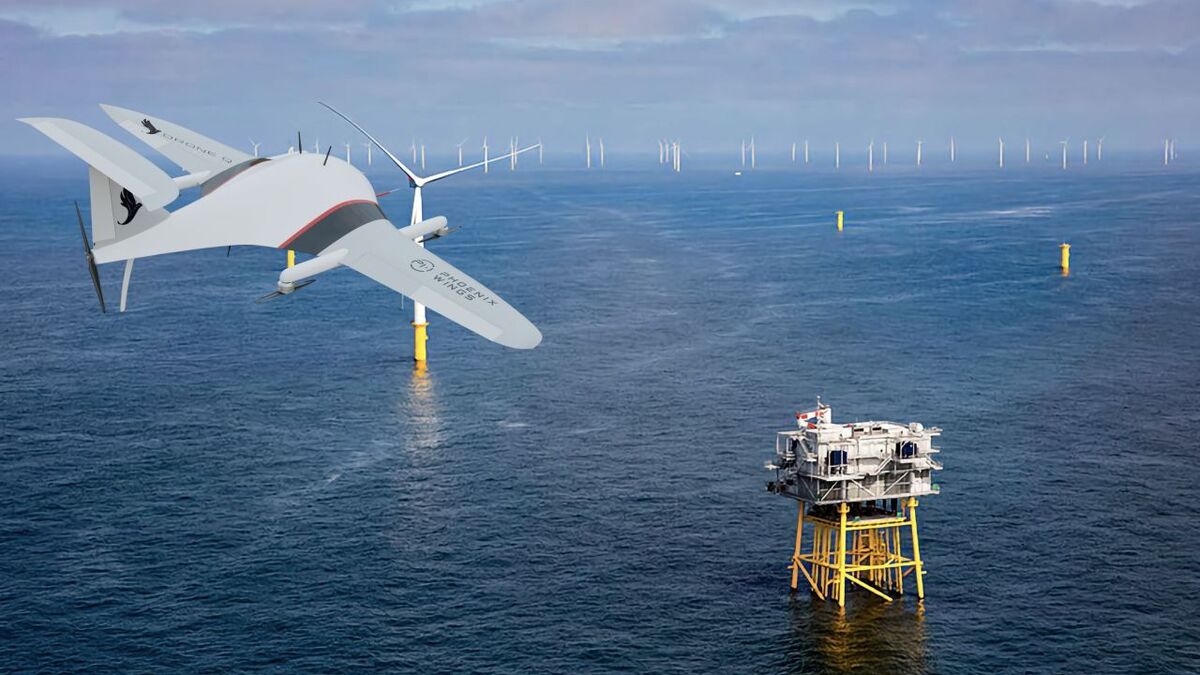DroneQ Robotics, the company behind the development of a drone delivery service, believes drones will play a major role in the offshore wind industry, but they will need to be fixed-wing units if they are to meet the needs of far-from-shore windfarms
As the company’s director John Troch told OWJ in an exclusive interview, DroneQ Robotics’ mission is to help ports in the North Sea, offshore energy companies and related industries reduce their carbon footprint using unmanned robotic technology.
“At DroneQ, we are combining the use of unmanned robotics, artificial intelligence and data to help enhance offshore logistics and reduce costs and emissions,” Mr Troch told OWJ.
“A lot of different types of unmanned aerial vehicles have been proposed to deliver equipment and tools to the offshore industry, but in our view, rotor-wing units simply won’t have the required range or lifting capacity for anything other than short-range work. That’s why our focus is on the use of fixed-wing units that operate more like aircraft once airborne, and benefit from the lift their wings provide.
“We are combining the benefits of long-range, high-lift fixed-wind delivery drones with an ongoing analysis of the requirements of the offshore industry, using data to optimise supply chain co-ordination,” Mr Troch explained.
“We have worked with a number of leading offshore logistic companies, such as DHSS, to analyse every aspect of offshore logistics. Our aim is to integrate cargo drones seamlessly into the process, focusing on transporting high-priority, high-value freight.”
Mr Troch and his colleagues anticipate drones will be able to deliver equipment to vessels and platforms offshore, and in due course, directly to wind turbines.
In the short to medium term, vessels with helidecks and offshore substations would act as ‘hubs’ for the delivery service. “But we will be able deliver direct to a nacelle too,” Mr Troch told OWJ.
The company is working with leading offshore energy companies and drone developers to trial drone delivery services using vertical take-off and landing or ‘VTOL’ fixed-wing drones and is planning to begin deliveries to an offshore oil and gas platform in the near future to prove the concept of daily flights.
DroneQ is working with the same companies to develop procedures for drone operations and address the communications requirements for remote-controlled delivery services. This might use a combination of satellite communications and 4G/5G services.
“We are looking at several concepts to make the delivery once a drone arrives offshore,” Mr Troch explained, “including hovering the drone over a helideck and winching freight down.” It may also be possible to recharge the batteries on a drone offshore in due course.
In March 2022, the company signed an agreement with Speeder Systems to test the deployment of another type of delivery unit, the M-Speeder ‘wing in ground effect’ (WIG) unit.
WIG craft are supported by aerodynamic forces which enable them to operate at long ranges at low altitude above the sea surface, but out of direct contact with it. Their arrangement, engineering characteristics, design, construction and operation have a high degree of commonality with aircraft but they operate with other waterborne craft and have to use the same collision avoidance rules as conventional shipping.
Mr Troch and his colleagues said WIGs can transport freight to offshore windfarms at comparable speeds to helicopters, but with significant cost savings and a reduction in emissions.
In July 2021, DroneQ opened DronePort Eemshaven, an initiative it developed in collaboration with the Offshore Wind Innovation Centre, EMS Maritime Offshore and Groningen Seaports. The ‘airport for drones’ is located at the Heliport Eemshaven and is also aimed at the offshore wind sector.
“We hope to begin trials offshore by the end of 2022,” Mr Troch concluded. “We are talking to windfarm operators in Germany and the Netherlands and hope to begin deliveries to windfarms in 2023.”






